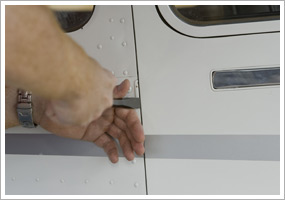| The following stories from the Oct. 29, 2010, edition of AOPA ePilot were provided to AOPA members who expressed an interest in the particular subject areas. Any AOPA member can receive information tailored to their areas of interest by updating their preferences online. |
- My ePilot—Turbine Interest -Insurance, legal questions about business aviation answeredEnsure that you have the proper insurance for your business aircraft and learn about the risks associated with aircraft ownership and operations during AOPA Aviation Summit. As part of the light business aviation track, the AOPA Insurance Agency, Avemco, and Phoenix Insurance will unite on Nov. 12 for an “Insurance Panel” to answer your questions. That same day, get your legal questions answered by AOPA Counsel Kathy Yodice. She will present a clear roadmap for when a pilot can accept reimbursement. Register for Summit today and check out more LBA forums. training tipsGeneral aviation security “Each person who holds a pilot certificate or a medical certificate shall present it for inspection upon the request of the Administrator, the National Transportation Safety Board, or any Many security rules and airspace restrictions have been added or enhanced as the nation’s attention focuses on airport security. The question posed above predates new regulations, but is still critical knowledge for a pilot. So are regulations from recent years—for example, additions to the regulations of a security disqualification rule for pilots, and a requirement that pilots operating as pilot in command within a 60-nautical-mile radius of the Washington, D.C., VOR/DME receive special awareness training and obtain a completion certificate. AOPA keeps pilots informed on security topics and engages them though programs such as AOPA’s Airport Watch, an initiative developed jointly with security officials to teach pilots and airport employees how to make their airports more secure. Pilots must also think about security during every preflight briefing by asking about temporary flight restrictions—especially during the fall election season, as this AOPA Online article explains. It is also important to remember that not all law enforcement personnel investigating a matter involving a pilot or aircraft are familiar with GA. The key is pilot cooperation. An example was the Aug. 28 incident in which flight training personalities John and Martha King were detained because the Cessna 172 they were flying bore an N number previously assigned to a Cessna 150 stolen in 2002. AOPA is discussing systemic improvements with federal officials. The answer to the sample knowledge test question above is C, from FAR 61.3: “Each person who holds an airman certificate, medical certificate, authorization, or license required by this part must present it and their photo identification as described in paragraph (a)(2) of this section for inspection upon a request from: training productsFAA publications on your iPhonePilotmall.com has issued 12 popular FAA publications as iPhone e-book applications. The titles are Aircraft Weight and Balance Handbook, Airplane Flying Handbook, Balloon Flying Handbook, CFI Handbook, FAR/AIM, Glider Flying Handbook, Instrument Flying Handbook, Instrument Procedures Handbook, Pilot’s Handbook of Aeronautical Knowledge, Rotorcraft Flying Handbook, Seaplane, Skiplane, and Float/Ski-Equipped Helicopter Operations Guide, and the Student Pilot’s Guide. Each is $2.99 and can be downloaded from the iTunes Store. Note: Products listed have not been evaluated by ePilot editors unless otherwise noted. AOPA assumes no responsibility for products or services listed or for claims or actions by manufacturers or vendors. final examQuestion: A buddy of mine asked me recently if I wanted to fly in formation with him sometime. I haven’t gotten back to him yet because I wasn’t sure whether it was legal. I also wondered what kind of things we should think about before doing it. Answer: Yes, it is legal. However, you would want to thoroughly discuss and plan the formation flight before attempting it. FAR 91.111 Operating near other aircraft is the regulation that covers formation flying. Briefly, it states that you cannot operate an aircraft so close to another one that a collision hazard exists, that you cannot fly in formation without prior arrangement between the two PICs, and that you cannot fly in formation if the aircraft is carrying passengers for hire. To learn more on the topic of formation flight, read “ Formation fumbles” from the Air Safety Institute. Got a question for our technical services staff? E-mail [email protected] or call the Pilot Information Center, 800/872-2672. Don’t forget the online archive of “Final Exam” questions and answers, searchable by keyword or topic. |
 Here is a sample question similar to one you might encounter on the
Here is a sample question similar to one you might encounter on the 

